When you first look at a watch, what’s the first thing that you see? For some people, it’s the shape of the case, or others, it’s the bezel. But for most, it is probably the dial. That makes sense. The dial is where the time is displayed and it takes up most of the space on the front of the watch. Sometimes it is called the face of the watch.
You’ve probably noticed that watches have very different dials to each other. Some are simple, some are complicated. Some are eye-catching, others are discrete. We explain some of the most common dial types that you will see; what they are made of; and how they are made.
How are Watch Dials Made?
Watch dials are made of metal, such as brass or titanium, and then a finish is applied to them. This can be done in many different ways, which we outline below. In another post, we explain what gets added to watch dials after they have been finished.
Printed Dials
Printed dials are probably the most common type you will see. Printed dials are more likely to have simple, clear designs. The type of printing that is used to print the pattern onto a watch dial is not unlike using a rubber stamp. A silicone rubber pad, that is somewhere between a marshmallow and chewing gum in softness, is used to press a pattern onto a dial. A special ink is used to ensure that the ink doesn’t run and keeps its shape. This is called pad printing. Before it was invented, watch dials were hand-painted by master dial makers. The results were inconsistent. Now, a watch company can use pad printing to make thousands of identical dials.
One of the most famous watches with a pad-printed dial is the Rolex Submariner (see below).
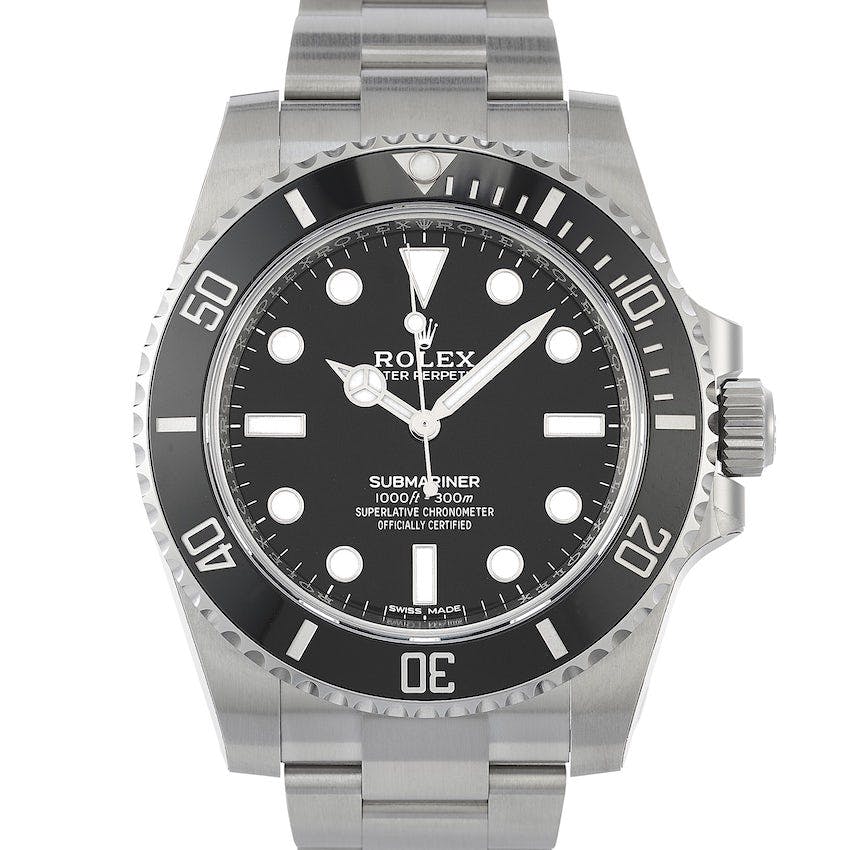
Notice how flat the printed dial looks on the Rolex Submariner
Lacquered Dials
Lacquered dials are rare. Probably the most eye-catching watches with lacquered dials are the Rolex Day-Date “Stella” dials. These have a variety of brightly coloured dials, and are sought-after by collectors. Lacquering a watch dial is similar to lacquering anything else. The reason to do it is to create a real depth of colour as well as special shade effects. The dial is sprayed with multiple layers of coloured varnish. This can be done by a machine, or by hand, but always takes a long time, so is an expensive technique.

Three Rolex Day-Date “Stella” dials. Photo courtesy of Bob’s Watches
Enamel Dials
Enamelled dials are also uncommon, as the enamelling process is even more complicated and time-consuming than lacquering. To make an enamel watch dial, the enameller has to coat a brass watch dial with glass powder (either white, or coloured), and then melt it by heating it. This process is very difficult to get right. The enameller has to be very skilled to use the right mix of glass powder and heat it to the correct temperature. Getting either of those wrong can result in cracked enamel or inconsistent colours. Below, you will see a brightly coloured enamel dial from a Scottish brand called anOrdain, and a simple cream enamel on a Jaeger LeCoultre.
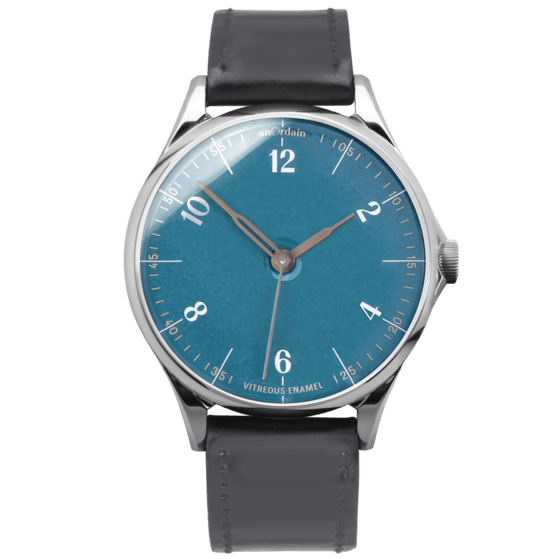
AnOrdain Model 1
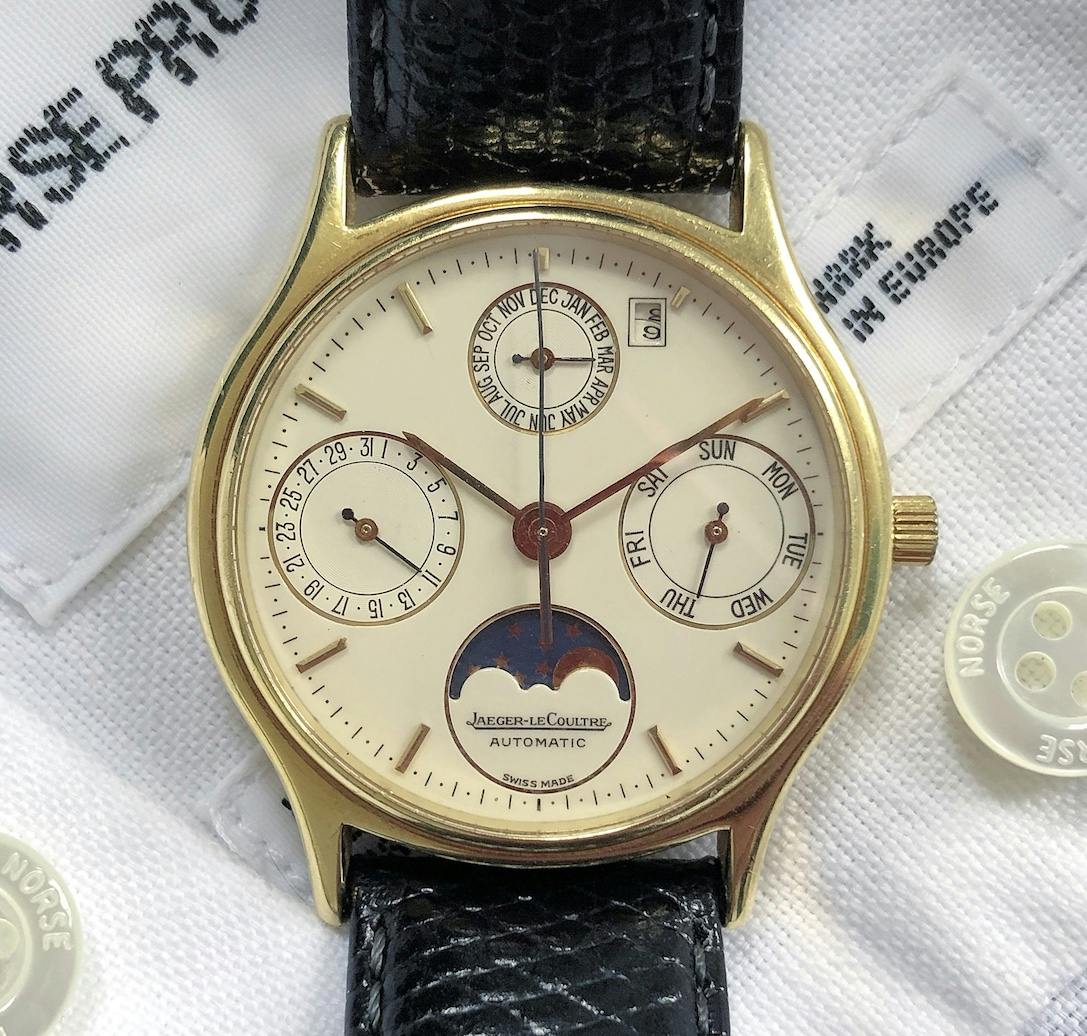
Jaeger LeCoultre Perpetual Calendar
Patterned Dials: Guilloche
One of the most complex dial finishes is called guilloche. A master craftsperson uses a rose engine lathe to very precisely carve a repeating pattern into the surface of the metal dial. There are many different patterns that can be created using the guilloche technique, and they all result in a striking dial design. Any imperfection in the hand-cut dial is instantly noticeable, so only the most skilled craftspeople work on guilloche – as a result, watches with guilloche dials are typically very expensive. Brands such as Audemars Piguet use a guilloche pattern called tapisserie carved into brass dials, which is then painted a variety of colours. Breguet’s “Classique” range have guilloche dials made of gold – manufacturing mistakes can very expensive!
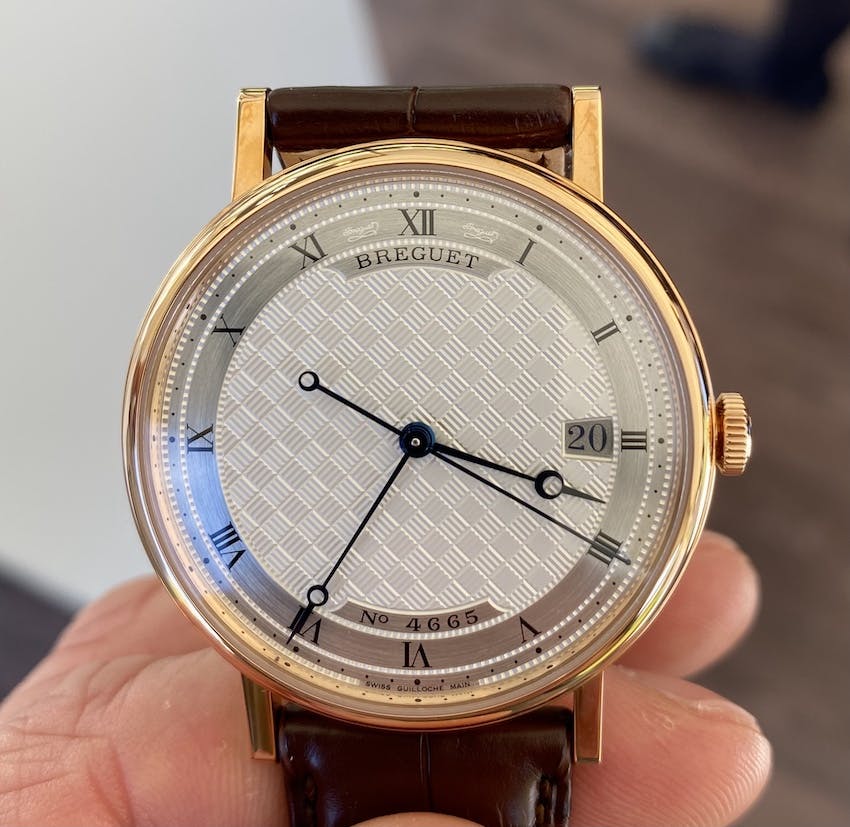
Breguet Classique with White Gold Guilloche Dial
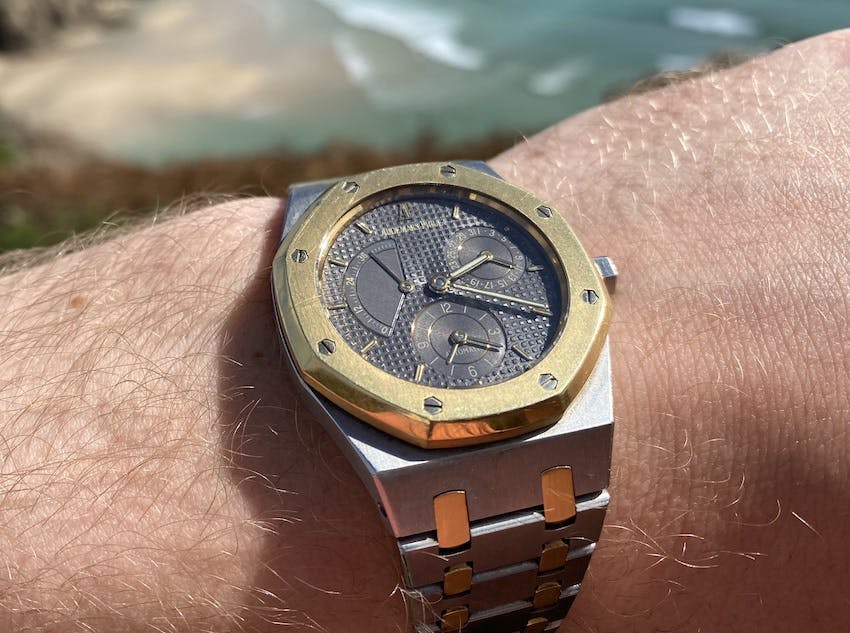
Audermars Piguet Royal Oak Dual Time
At The Watch Collectors’ Club, we don’t think that one type of dial is better than another. We love exploring the many different types of watch dials, and our personal collections contain lots of different dial types. Next time that you look at a watch, we’d encourage you to have a closer look at the dial. What patterns does it have on it? What text? How do you think it was made? Make sure to follow us on Facebook and Instagram to see more examples of the different dial types. We host events every month where you can join us to learn more about watches. Find them on our Events Page here.
Share Post
